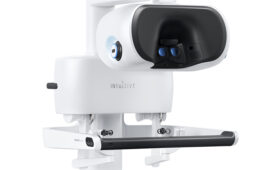 Given the critical importance of battery technology in medical device electronics, as well as consumer products, it makes sense that resources are being allotted to improving battery life, size, and effectiveness. The following is a round up of the coolest early research in battery technology – any applications in medtech are still down the road. If we missed some of your favorites, be sure to share it with us.
Given the critical importance of battery technology in medical device electronics, as well as consumer products, it makes sense that resources are being allotted to improving battery life, size, and effectiveness. The following is a round up of the coolest early research in battery technology – any applications in medtech are still down the road. If we missed some of your favorites, be sure to share it with us.
Leafy greens power up sodium
Need a new battery recipe? Take one leaf, bake it, and add sodium. Scientists are the University of Maryland used a carbonized oak leaf and pumped it full of sodium to create a demonstration of a battery’s anode. The story appeared in the journal ASC Applied Materials and Interface. Various organics have been used as well, including melon skin, banana peels, and peat moss, but the researchers say leaves need less preparation and the natural shape of the leaf is ideally suited to the process. Hongbian Li, a visiting professor at the University of Maryland’s department of materials science & engineering and one of the main authors of the paper, said the real goal is to replace lithium in rechargeable batteries with sodium, which holds more charge but cannot handle charge/discharge cycles as well as lithium. Li says finding anode material that is compatible with sodium, which is slightly larger than lithium, has been a challenge to the goal.
Prep for the battery is straightforward. Researchers heated the leaf for an hour at 1,000ºC to burn off all but the underlying carbon structure. The lower side of the oak leaf is studded with pores for the leaf to absorb water. In this new design, the pores absorb the sodium electrolyte. At the top, the layers of carbon that made the leaf tough become sheets of nanostructured carbon to absorb the sodium that carries the charge.
The low surface area of a leaf helps decrease defects and leaves hold a lot of small structures packed closely together, which maximizes space. Its internal structures are the right size and shape to be used with sodium electrolyte. “A leaf is designed by nature to store energy for later use, and using leaves in this way could make large-scale storage environmentally friendly,” says Li.
The next step, Hu said, is “to investigate different types of leaves to find the best thickness, structure and flexibility” for electrical energy storage. The researchers have no plans to commercialize at this time.
The work was supported by the Department of Energy’s Energy Frontier Research Center program, as part of Nanostructures for Electrical Energy Storage.
Silicon dust in a graphene cage
Storing more energy in anodes is a challenge, as is reducing the size and weight of high-performance batteries. Two major problems have stood in the way: Silicon particles swell, crack and shatter during battery charging, and they react with the battery electrolyte to form a coating that saps their performance.
A team from Stanford University and the Department of Energy’s SLAC National Accelerator Laboratory has built graphene cages to wrap each silicone anode.
In a report published in Nature Energy, the team discusses a three-step method for building microscopic graphene cages that are roomy enough to let the silicon particle expand as the battery charges, yet tight enough to hold all the pieces together when the particle falls apart, so it can continue to function at high capacity. The strong, flexible cages also block destructive chemical reactions with the electrolyte.
“In testing, the graphene cages actually enhanced the electrical conductivity of the particles and provided high charge capacity, chemical stability and efficiency,” said Yi Cui, an associate professor at SLAC and Stanford who led the research. “The method can be applied to other electrode materials, too, making energy-dense, low-cost battery materials a realistic possibility.”
“This new method allows us to use much larger silicon particles that are one to three microns, or millionths of a meter, in diameter, which are cheap and widely available,” Cui said. The particles used are similar to the waste created by milling silicon ingots to make semiconductor chips – like bits of sawdust of all shapes and sizes.
To create the perfectly fit graphene cages, scientists accomplished first coated silicon particles with nickel, which can be applied in exact thicknesses. Then they grew layers of graphene on top of the nickel. Because nickel catalyses. Finally they etched the nickel away, leaving just enough space within the graphene cage for the silicon particle to expand.
Lithium Superoxides
Argonne battery scientists have produced a stable crystalized lithium superoxide (LiO2) rather than lithium peroxide during battery discharge. The new discharge can easily dissociate into lithium and oxygen, improving efficiency and cycle life. The researchers say this opens a path for a new kind of battery using a lithium-air closed system. Open systems require oxygen intake from the environment, a process that poses risk and compromises efficiency. By contrast, the researchers say the closed battery could potentially offer five times the energy density of a lithium ion.



![A photo of the Medtronic GI Genius ColonPro polyp detection system flagging a potential sign of colon cancer during a colonoscopy. [Photo courtesy of Medtronic]](https://www.medicaldesignandoutsourcing.com/wp-content/uploads/2024/04/Medtronic-GI-Genius-doctors-268x170.jpg)
